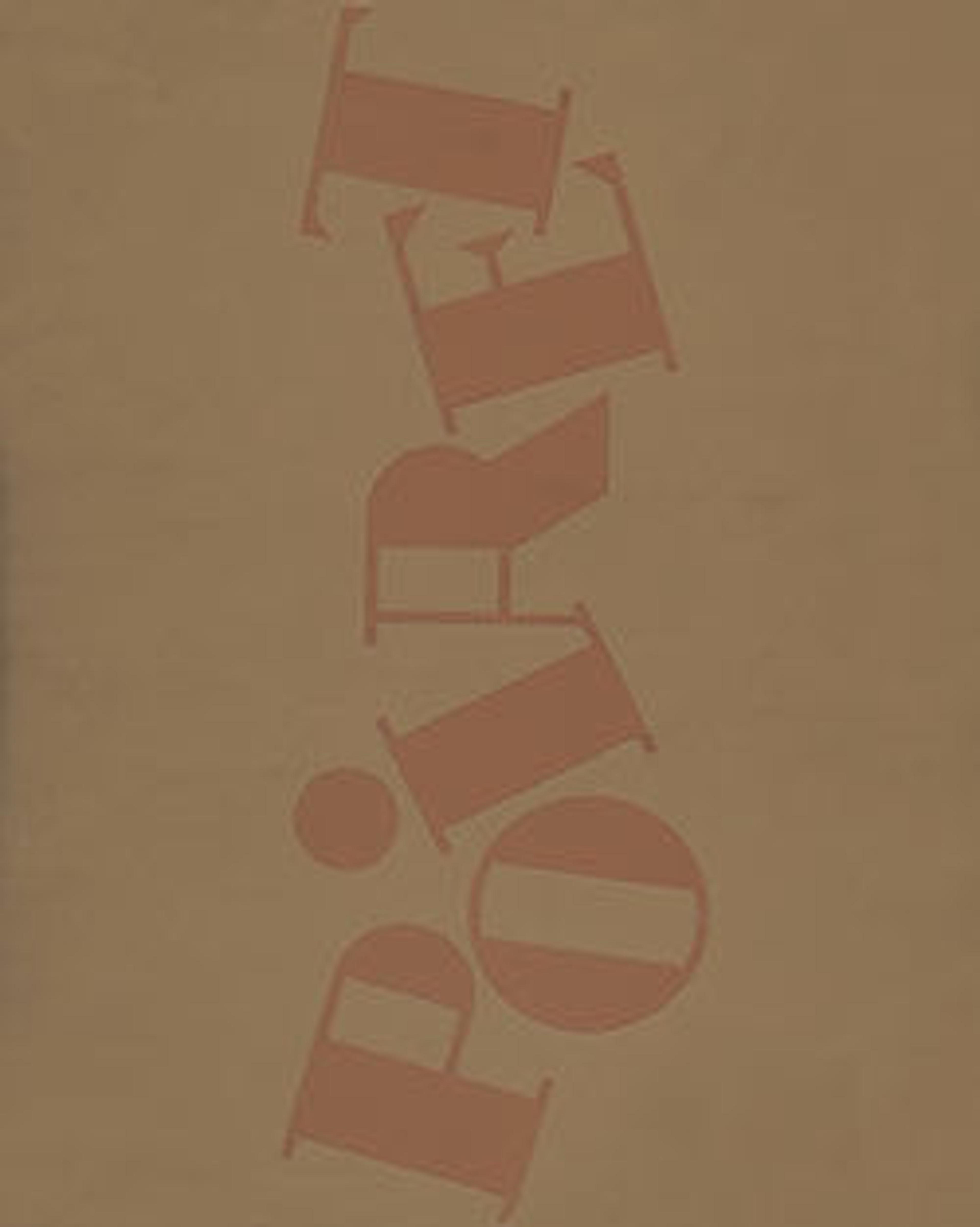Coat
A series of coats and jackets incorporating wool jacquards with novelty striped patterns in the style of the wools used in Bedouin burnooses recurs in a number of Poiret's collections. As with many of his designs, the introduction of new silhouettes and the retention of details from earlier collections can complicate a precise dating of his works. However, in the case of the short coat from the personal wardrobe of his wife, a photograph of a family vacation in Gstaad together with a note secreted in the coat's pocket (identifying the source of the textile) establishes the date, as does a photograph of the related coat in the Séeberger Collection at the Bibliothèque nationale de France, in Paris.
In 1918, Poiret had recently returned from a trip to Morocco. Working with the noted textile house of Rodier, he was able to evoke the rusticity of the palette and the pattern of hand-loomed textiles of the region with the luxurious finishing possible in his replication in fine wool. Denise Poiret wore the funnel collar of the coat open and splayed like a capelet collar. Photographs of her in Poiret’s tailored designs invariably depict her in an attitude of relaxed informality. Coats are worn open, and cloaks are allowed to slip off the shoulders.
Three years later, in 1921, the designer constructed the related coat with the closure shifted from center front, and thus less adaptable to being worn unbuttoned. (In 1922, however, Poiret was to redesign the coat with a center-front fastening, and, as another photograph in the Séeberger Collection testifies, clients wore it splayed open à la Denise Poiret.) The black satin bodice and sleeves of the piece are trimmed with striped wool at the collar and cuffs. The same wool, used in the skirt of the coat, is gathered into cartridge pleats at the hips in the fashion seen in European folkloric dress.
In the early 1920s, the incorporation of details and silhouettes of regional dress, which began in the 1910s, reached new heights. Poiret, who always favored the picturesque, was among the greatest advocates of artisanal traditions. Of course, his citations of the homespun and the hand embroidered were subject to the extraordinary techniques of his own couture atelier. In the case of Denise Poiret's coat, the matching up of the striping at seams might be accomplished by any careful seamstress, but the excision of the bands of triangles and hand stitching necessary to finish the collar are evidence of the couturier’s hand.
In 1918, Poiret had recently returned from a trip to Morocco. Working with the noted textile house of Rodier, he was able to evoke the rusticity of the palette and the pattern of hand-loomed textiles of the region with the luxurious finishing possible in his replication in fine wool. Denise Poiret wore the funnel collar of the coat open and splayed like a capelet collar. Photographs of her in Poiret’s tailored designs invariably depict her in an attitude of relaxed informality. Coats are worn open, and cloaks are allowed to slip off the shoulders.
Three years later, in 1921, the designer constructed the related coat with the closure shifted from center front, and thus less adaptable to being worn unbuttoned. (In 1922, however, Poiret was to redesign the coat with a center-front fastening, and, as another photograph in the Séeberger Collection testifies, clients wore it splayed open à la Denise Poiret.) The black satin bodice and sleeves of the piece are trimmed with striped wool at the collar and cuffs. The same wool, used in the skirt of the coat, is gathered into cartridge pleats at the hips in the fashion seen in European folkloric dress.
In the early 1920s, the incorporation of details and silhouettes of regional dress, which began in the 1910s, reached new heights. Poiret, who always favored the picturesque, was among the greatest advocates of artisanal traditions. Of course, his citations of the homespun and the hand embroidered were subject to the extraordinary techniques of his own couture atelier. In the case of Denise Poiret's coat, the matching up of the striping at seams might be accomplished by any careful seamstress, but the excision of the bands of triangles and hand stitching necessary to finish the collar are evidence of the couturier’s hand.
Artwork Details
- Title: Coat
- Designer: Paul Poiret (French, Paris 1879–1944 Paris)
- Date: 1918
- Culture: French
- Medium: wool, rayon
- Credit Line: Isabel Shults Fund, 2005
- Object Number: 2005.201
- Curatorial Department: The Costume Institute
More Artwork
Research Resources
The Met provides unparalleled resources for research and welcomes an international community of students and scholars. The Met's Open Access API is where creators and researchers can connect to the The Met collection. Open Access data and public domain images are available for unrestricted commercial and noncommercial use without permission or fee.
To request images under copyright and other restrictions, please use this Image Request form.
Feedback
We continue to research and examine historical and cultural context for objects in The Met collection. If you have comments or questions about this object record, please complete and submit this form. The Museum looks forward to receiving your comments.
